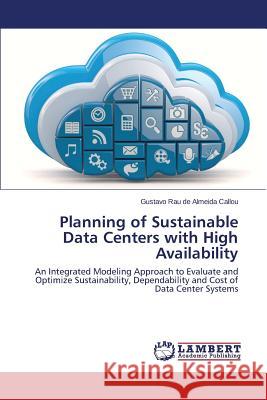Planning of Sustainable Data Centers with High Availability » książka
Planning of Sustainable Data Centers with High Availability
ISBN-13: 9783659580727 / Angielski / Miękka / 2014 / 172 str.
The advent of services such as cloud computing, social networks and e-commerce has led to an increased demand for computer resources from data centers. Prominent issues for data center designers are sustainability, cost, and dependability, which are significantly affected by the redundant architectures required to support these services. Within this context, models are important tools for designers when attempting to quantify these issues before implementing the final architecture. This book proposes a set of models for the integrated quantification of the sustainability impact, cost, and dependability of data center power and cooling infrastructures. This is achieved with the support of an evaluation environment which is composed of ASTRO, Mercury and Optimization tools. The approach taken to perform the system dependability evaluation employs a hybrid modeling strategy which recognizes the advantages of both stochastic Petri nets and reliability block diagrams. Besides that, a model is proposed to verify that the energy flow does not exceed the maximum power capacity that each component can provide (considering electrical devices) or extract (assuming cooling equipment).
The advent of services such as cloud computing, social networks and e-commerce has led to an increased demand for computer resources from data centers. Prominent issues for data center designers are sustainability, cost, and dependability, which are significantly affected by the redundant architectures required to support these services. Within this context, models are important tools for designers when attempting to quantify these issues before implementing the final architecture. This book proposes a set of models for the integrated quantification of the sustainability impact, cost, and dependability of data center power and cooling infrastructures. This is achieved with the support of an evaluation environment which is composed of ASTRO, Mercury and Optimization tools. The approach taken to perform the system dependability evaluation employs a hybrid modeling strategy which recognizes the advantages of both stochastic Petri nets and reliability block diagrams. Besides that, a model is proposed to verify that the energy flow does not exceed the maximum power capacity that each component can provide (considering electrical devices) or extract (assuming cooling equipment).











